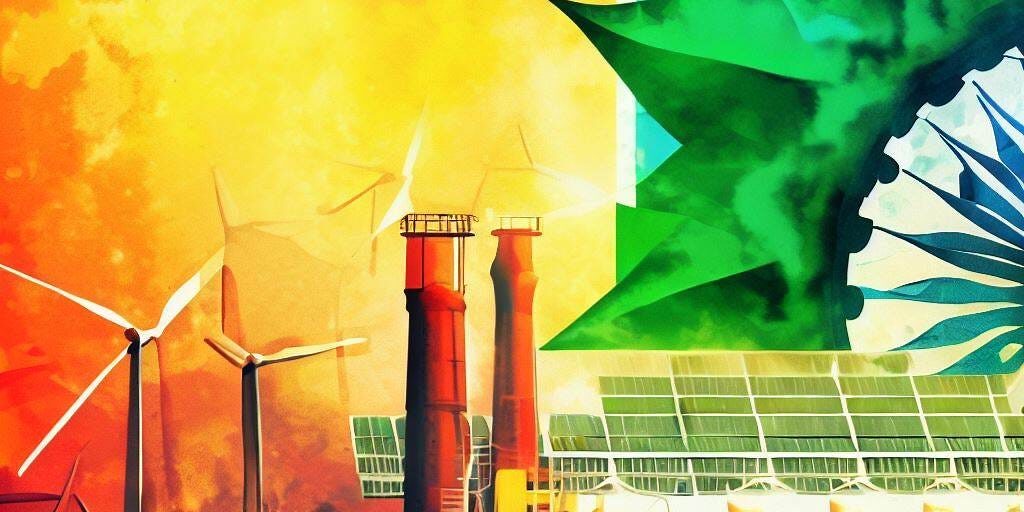India is a pivotal player in global energy markets, often relying on strategic trade partnerships to fuel its growing economy. As the world’s third-largest importer, India imported US$ 170 billion worth of crude petroleum in 2022, with 15 percent and 6.34 percent of these imports originating from Russia and the United States (US), respectively. However, amidst the tumultuous backdrop of the Russia-Ukraine conflict, India was at a crossroads, tasked with navigating the precarious balance between its energy security and global geopolitical tensions.
India’s energy appetite is quite large, fuelled by its burgeoning population and rapid economic growth. With a significant portion of these energy needs reliant on imports, particularly oil and gas, has India’s energy trade landscape witnessed a significant rewiring or stood relatively stable?
Situating India in the global energy landscape
The Russia-Ukraine war has cast a shadow over global energy markets. As two key players in the energy arena, any disruptions in the relationship between Russia and Ukraine reverberate worldwide, sending shockwaves through the delicate balance of supply and demand. India relies heavily on imported oil and gas to meet its energy needs, with a significant portion of these imports coming from Russia and Ukraine (and its Western allies).
The conflict between Russia and Ukraine has significantly impacted India’s macroeconomic landscape and energy sector. This has been manifested primarily through fluctuations in oil and gas prices and concerns regarding the stability of energy imports. India witnessed a substantial increase in its imports of Russian oil, driven by discounted rates offered amidst the war. By the end of 2022, India had imported US$ 25.5 billion worth of crude oil from Russia, compared to a US$ 935 million import value for 2021.
For the fiscal year 2022-23, these imports had surged nearly 13 times compared to the previous fiscal year, making Russia India’s second-largest crude oil supplier, contributing to approximately a third of India’s oil imports by April 2023. While these discounted imports aided India in addressing its own macroeconomic challenges arising from escalating petroleum prices, they also bolstered the nation’s export business, resulting in a notable increase in petroleum product exports. However, the reliance on Russian oil imports made India susceptible to the broader repercussions of the conflict on global energy markets.
Evolutions in India’s global trade dynamics
The Russia-Ukraine conflict has notably shaped India’s trade relationships and economic engagements, particularly with the EU and the US, alongside its enduring connections with Russia. Traditionally, India has fostered robust ties with Russia, especially in the defense and energy sectors. However, the conflict’s ripple effects, including Western sanctions on Russia, have indirectly impacted India’s imports, particularly in defense and technology domains. Despite these hurdles, India has augmented its imports of discounted Russian oil, elevating Russia to a prime oil supplier by late 2022.
Concurrently, India’s interactions with the EU and the US have undergone a nuanced evolution. Initially expecting a firm stance against Russia, these Western powers have acknowledged India’s strategic imperatives, considering its reliance on Russian military hardware. Dialogues with EU officials and strategic military deliberations with the US signal a shift towards fortified defense collaborations, potentially reducing India’s dependence on Russian military imports.
India’s energy trade landscape has undoubtedly been profoundly impacted by the undercurrents of the Russia-Ukraine war. The surge in discounted Russian oil imports, while initially alleviating India’s macroeconomic challenges, also underscored the nation’s vulnerability to fluctuations in global energy prices. Moreover, the ripple effect of the conflict on India’s economic engagements with the rest of the world has further impressed that India must remain steadfast in its commitment to safeguarding its national interests while embracing the opportunities and challenges presented by evolving trade dynamics. In this balancing act, India’s pragmatic approach to resilience and adaptability in the face of geopolitical upheavals positions it as a key player in shaping the future of global markets.
Links of Data
https://brill.com/view/journals/jwit/24/6/article-p847_2.xml?language=en
Image source:- https://medium.com/@niranjanspattanshetti/indias-dynamic-energy-landscape-trends-a659f2402050






